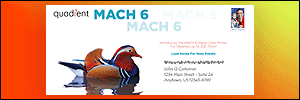KevinC@EFI
Well-known member
I'd like your input if possible -
I'm trying to design a new test image that we can use to make sample plates to give to prospective clients. Doing "live" jobs for each customer is always great, but the turn-around time and cost of doing so is not ideal.
What features/tests should we incorporate into the file to help customers see the quality and capability of our system compared to their needs? This is what I'm planning on so far, but please let me know what you'd suggest too:
- text examples in normal and reverse, regular and italic, from 12pt to 2pt
- fine lines in horizontal/vertical/diagonal, regular and reverse, to 0.1pt
- highlight patches 1-5% at various line screens (up to 180lpi)
- calibration patches across full tonal range for each separation (for creating a customized cutback for future testing/fingerprinting)
- highlight gradations/vignettes
- process color sample images (SWOP standard, average calibration curves), including skin tones and highlights/gradations
- solid areas next to screened areas, linework, and reverses (to assess required pressure vs. quality)
- 3/4 tone flat tint across full length/width (to assess uniformity/consistency)
Thanks for any input!
Kevin Cazabon
DigiFlex
I'm trying to design a new test image that we can use to make sample plates to give to prospective clients. Doing "live" jobs for each customer is always great, but the turn-around time and cost of doing so is not ideal.
What features/tests should we incorporate into the file to help customers see the quality and capability of our system compared to their needs? This is what I'm planning on so far, but please let me know what you'd suggest too:
- text examples in normal and reverse, regular and italic, from 12pt to 2pt
- fine lines in horizontal/vertical/diagonal, regular and reverse, to 0.1pt
- highlight patches 1-5% at various line screens (up to 180lpi)
- calibration patches across full tonal range for each separation (for creating a customized cutback for future testing/fingerprinting)
- highlight gradations/vignettes
- process color sample images (SWOP standard, average calibration curves), including skin tones and highlights/gradations
- solid areas next to screened areas, linework, and reverses (to assess required pressure vs. quality)
- 3/4 tone flat tint across full length/width (to assess uniformity/consistency)
Thanks for any input!
Kevin Cazabon
DigiFlex











